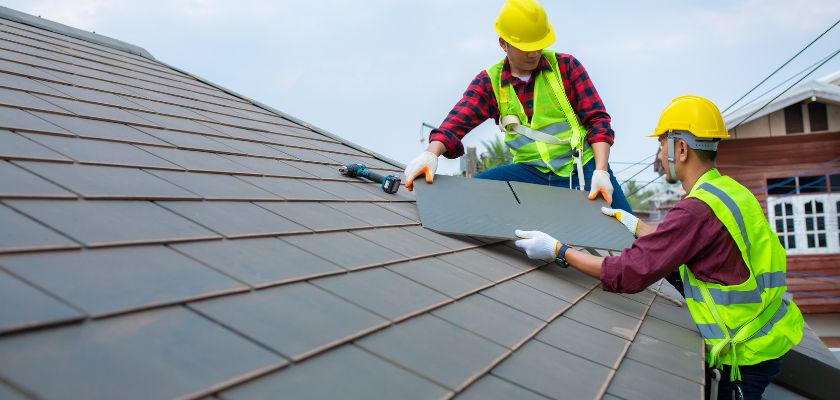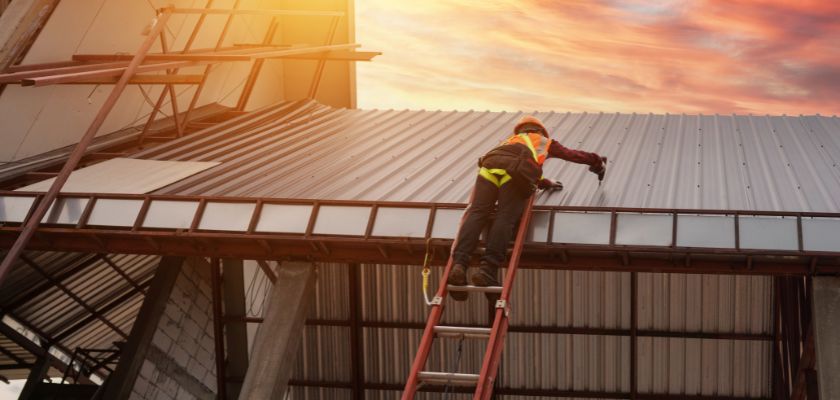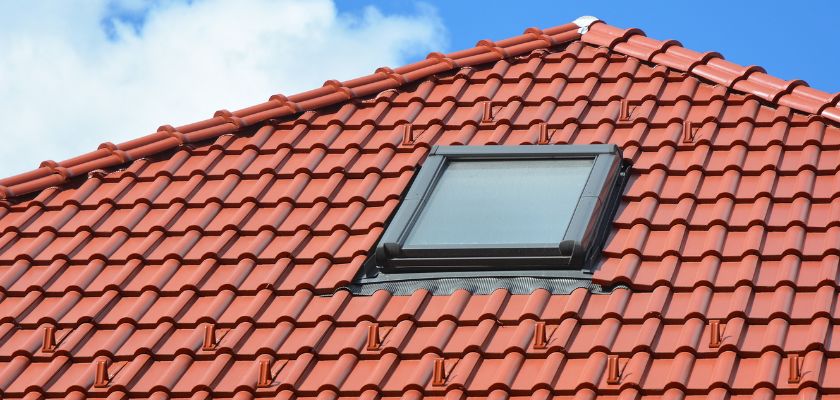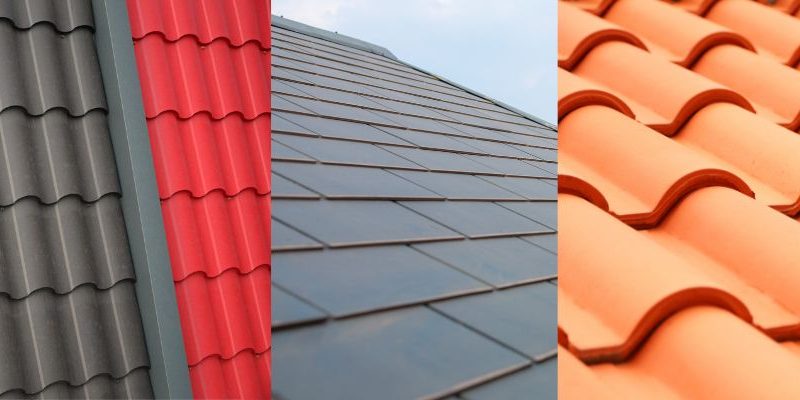Choosing the right roofing material for your home is crucial to ensuring longevity, energy efficiency, and protection against the elements. As you prepare your home for winter, selecting a durable and reliable roofing material is more important than ever. This article will explore the top 5 roofing materials, highlighting their advantages and why they might be the perfect fit for your home. With the help of pristine roofing and outdoor services, you can make an informed decision and keep your home safe and warm throughout the colder months.
Asphalt Shingles

Asphalt shingles are one of the most popular roofing materials in North America. They are known for their affordability and ease of installation, making them a favorite among homeowners and contractors alike.
Advantages of Asphalt Shingles
- Cost-Effective: Asphalt shingles are relatively inexpensive compared to other roofing materials.
- Versatility: Available in a variety of colors and styles, they can match any home’s aesthetic.
- Ease of Installation: They are lightweight and easy to install, reducing labor costs.
Disadvantages of Asphalt Shingles
- Durability: They have a shorter lifespan compared to other materials, typically lasting 15-30 years.
- Weather Sensitivity: They can be damaged by extreme weather conditions, such as high winds and hail.
Maintenance Tips for Asphalt Shingles
Regular inspections and maintenance can help prolong the life of asphalt shingles. Ensure your roof is free from debris and check for any signs of damage after storms to prepare your home for winter.
Metal Roofing

Metal roofing has gained popularity due to its durability and energy efficiency. It is an excellent option for those looking to invest in a long-lasting roofing solution.
Advantages of Metal Roofing
- Longevity: Metal roofs can last 40-70 years with proper maintenance.
- Energy Efficiency: They reflect solar radiant heat, which can reduce cooling costs.
- Durability: Metal roofs are resistant to fire, mildew, insects, and rot.
Disadvantages of Metal Roofing
- Cost: The initial cost of metal roofing is higher than other materials.
- Noise: Without proper insulation, metal roofs can be noisy during rain or hailstorms.
Maintenance Tips for Metal Roofing
To maintain a metal roof, regularly clean the surface to prevent the buildup of dirt and debris. Additionally, check for loose or damaged panels and have pristine roofing and outdoor services address any issues promptly.
Slate Roofing

Slate roofing is known for its natural beauty and exceptional durability. It is often used on high-end homes and historic buildings.
Advantages of Slate Roofing
- Aesthetic Appeal: Slate offers a classic and elegant look that enhances any home’s curb appeal.
- Durability: Slate roofs can last over 100 years with minimal maintenance.
- Fire Resistance: Slate is naturally fire-resistant, providing an added layer of protection.
Disadvantages of Slate Roofing
- Cost: Slate is one of the most expensive roofing materials.
- Weight: Its heavy weight may require additional structural support.
Maintenance Tips for Slate Roofing
Regularly inspect your slate roof for any cracked or broken tiles. Engaging pristine roofing and outdoor services for professional inspections and repairs can help maintain the integrity of your slate roof.
Tile Roofing
Tile roofing, typically made from clay or concrete, is popular in regions with warm climates. It is known for its durability and distinctive appearance.
Advantages of Tile Roofing
- Longevity: Tile roofs can last 50-100 years.
- Aesthetic Variety: Available in many styles and colors, tile roofs can enhance the look of any home.
- Energy Efficiency: Tiles provide natural ventilation, reducing heat transfer.
Disadvantages of Tile Roofing
- Cost: Tile roofing can be expensive to install.
- Weight: Like slate, tile roofs are heavy and may require additional structural support.
Maintenance Tips for Tile Roofing
Keep your tile roof clean and free from debris. Check for any cracked or broken tiles and have them replaced immediately to prevent leaks and other damage.
Wood Shingles and Shakes
Wood shingles and shakes offer a natural and rustic look. They are often used in cottage-style homes and in areas where a natural appearance is desired.
Advantages of Wood Shingles and Shakes
- Aesthetic Appeal: They provide a warm, natural look that blends well with the environment.
- Insulation: Wood shingles and shakes offer good insulation properties.
- Eco-Friendly: Wood is a renewable resource and can be sustainably sourced.
Disadvantages of Wood Shingles and Shakes
- Maintenance: They require regular maintenance to prevent rot, mold, and insect damage.
- Fire Risk: Wood shingles and shakes are not fire-resistant unless treated with a fire retardant.
Maintenance Tips for Wood Shingles and Shakes
Regularly clean your wood roof to remove debris and prevent moss growth. Treating the wood with preservatives and fire retardants can extend its lifespan and safety.
Final Wording
Choosing the right roofing material is essential to prepare your home for winter and ensure its long-term protection. By considering factors such as cost, durability, and maintenance, you can select the best material for your needs. Whether you opt for asphalt shingles, metal, slate, tile, or wood, engaging pristine roofing and outdoor services will help you achieve a beautiful, durable, and energy-efficient roof. Invest in quality roofing today to safeguard your home against the elements and enhance its overall appeal.
FAQ’s
What factors should I consider when choosing a roofing material?
When choosing a roofing material, consider factors such as climate, budget, durability, maintenance requirements, and aesthetic preferences. It’s important to select a material that can withstand local weather conditions and aligns with your long-term goals for your home.
How long does a metal roof typically last?
Metal roofs are known for their longevity and can last between 40 to 70 years with proper maintenance. Their durability makes them a cost-effective option in the long run, despite a higher initial investment.
Are asphalt shingles suitable for all climates?
Asphalt shingles are versatile and can be used in various climates. However, they may not be the best choice for areas prone to extreme weather conditions such as heavy hail or high winds. Regular inspections and maintenance can help prolong their lifespan in such environments.
What maintenance is required for a slate roof?
Slate roofs require minimal maintenance but should be regularly inspected for cracked or broken tiles. Engaging professional services for routine inspections and repairs ensures the roof remains in good condition and extends its lifespan.
Can tile roofing help with energy efficiency?
Yes, tile roofing can improve energy efficiency by providing natural ventilation, which reduces heat transfer. This can help keep your home cooler in the summer and reduce your energy bills. Additionally, tile roofs are excellent at reflecting sunlight.







